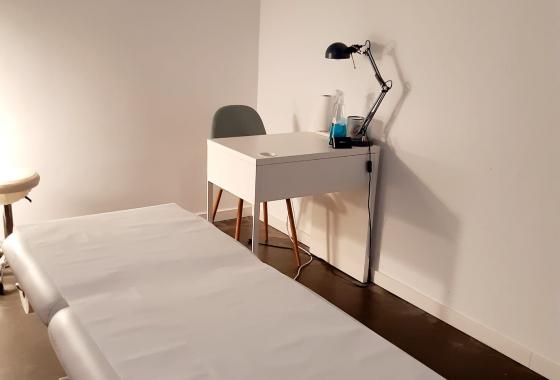Osteopathy of the Pubis or Pubalgia is usually an ailment that is characteristic of runners and footballers, this also usually occurs in any sport that involves movements that converge on the pubis or form a primary part of it, causing pain and even loss of sport temporarily. In the following article you will find everything related to Pubalgia and how our professionals can treat it effectively at FisioClinics Palma de Mallorca.
What is a Pubalgia?
Pubalgia is a painful syndrome that generally occurs when there is hypermobility of the pubic symphysis, causing an inflammation of the muscles that insert into the pubis, such as the abdominals and the hip adductors. The body's center of gravity is located in the pelvis, which makes it prone during physical activities to suffer from significant biomechanical forces in the area.
What are the symptoms of Osteopathy Pubis?
Various symptoms exist in Pubalgia that we will tell you below:
-
Difficulty mobilizing the hips and legs.
-
Pain is the main symptom that occurs in the groin area or lower abdomen and can radiate to the thigh.
-
Inability to stand on one leg.
-
Pain appears after intense practice or training.
-
Misalignment of the pelvic and / or spinal joints.
-
Pain can be felt at rest and is continuous.
-
You cannot perform movements such as crossing your legs.
-
Sometimes the pain can also radiate into the inner thighs.
-
May be associated with incontinence symptoms.
What Causes Osteopathy Pubis?
Because the symphysis pubis is the body's center of gravity during movement, it is prone to developing Osteopathy of Pubis, which is a disease caused by an abdominal-inguinal-pelvic conflict that occurs more frequently in athletes. The causes of this disease are multifactorial, variable from one person to another, which we can highlight are:
-
Laxity of the ligaments.
-
Presence of tendinopathy of the adductor muscles.
-
Hypotonia of the abdominal muscles, especially the obliques.
-
Overexertion in the groin area.
-
High intensity sports practice.
-
Bad footwear coupled with bad terrain to practice.
-
Both direct and indirect injuries during exercise.
-
Varus deformity of the knee or foot.
-
Visceral dysfunctions of the lumbar pelvic organs (bladder, uterus or prostate)
-
Dismetria in the lower limbs.
How is the medical diagnosis of Pubalgia made?
Pubalgia could be diagnosed through special tests, the medical history, observing the type of pain that the patient presents, the movements that he can or cannot perform, also imaging tests such as X-rays help to complement the diagnosis and serve to rule out any other pain in the lumbar spine and the sacroiliac joint. To confirm the medical diagnosis of Pubalgia, tests such as: ultrasound, MRI or CT scans should be performed, with which other associated conditions can also be ruled out.
 Physiotheraphy
Physiotheraphy Osteopathy
Osteopathy Massage
Massage Lymphatic
Lymphatic Group classes
Group classes Home
Home Baby
Baby






































